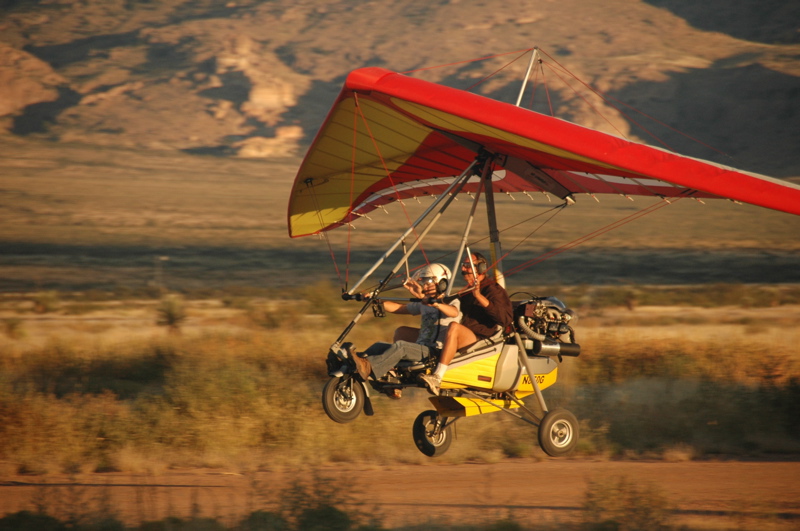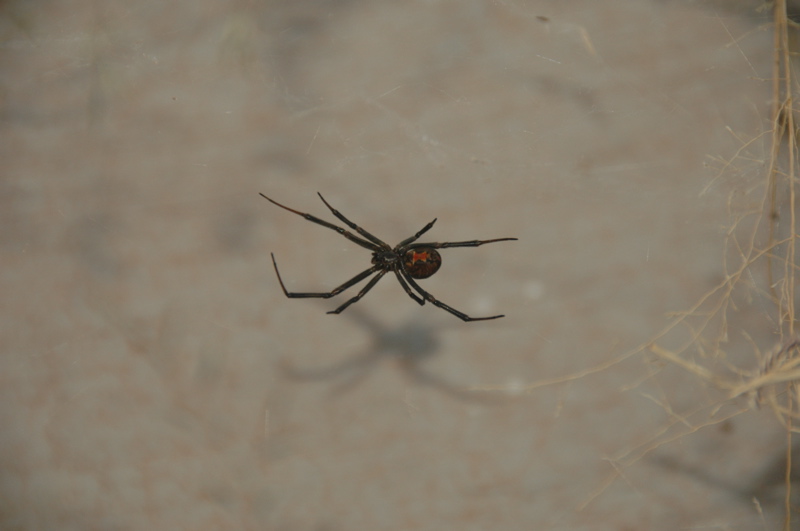Our last(?) stop before Tucson is an assignment I’ve given myself, for the magazine. There’s a little airpark in the very remote town of Rodeo NM, where a group of ‘Sky Gypsies’ fly light sport aircraft from a 7200 ft packed dirt airstrip. While I like flying, the real reason we are here is because this park contains a small array of vintage Airstreams, polished and arranged in a semi-circle next to the runway.
This is the fun part of my job. I interview everyone I see, take a lot of pictures, and then write up the experience for the blog and (eventually) the magazine.
 The Airstreams are housing for members of the park association as well as students who come here to get certified to fly light sport aircraft. Neil Bungard teaches these folks in Air Creation planes every morning and evening when the air is relatively calm and the temperatures are moderate. It takes about 28 hours of flight instruction to get certified, and so having the Airstreams as temporary housing is handy.
The Airstreams are housing for members of the park association as well as students who come here to get certified to fly light sport aircraft. Neil Bungard teaches these folks in Air Creation planes every morning and evening when the air is relatively calm and the temperatures are moderate. It takes about 28 hours of flight instruction to get certified, and so having the Airstreams as temporary housing is handy.
 We parked our Airstream in the gravel lot adjacent to the field for a night. There are no hookups and no formal transient spots for visiting RV’ers, but plenty of room to just dry camp. At night it’s very quiet, but in the morning and evening it’s nice to hear the sound of little aircraft engines practicing touch-and-goes on the runway. For a pilot, aircraft noise is a good thing.
We parked our Airstream in the gravel lot adjacent to the field for a night. There are no hookups and no formal transient spots for visiting RV’ers, but plenty of room to just dry camp. At night it’s very quiet, but in the morning and evening it’s nice to hear the sound of little aircraft engines practicing touch-and-goes on the runway. For a pilot, aircraft noise is a good thing.
We’re 30 miles from a very lonely stretch of I-10 out here. This is a quiet corner of New Mexico. It’s 60 miles to a grocery store. Apparently it’s a popular place for retired astronomers to go, since the night sky is very dark and clear. It’s also a great place for observing the natural desert world. There are lots of interesting creatures here, including giant grasshoppers, tarantulas, and javalinas. Emma found a black widow spider last night, which was exciting for her but then caused her to worry they’d climb into the trailer while she was sleeping.
Coming into the park requires a half mile drive down a washboard gravel road. When making a 90-degree turn at low speed on this road, the right rear tire of the Nissan blew out. (The on-board Tire Pressure Management System that comes with the Nissan was no help at all — it alarmed 30 seconds after the tire blew out.)
I’ve been watching the Nissan’s tires for a few months. They are nearly worn out after about 40,000 miles, and my plan was to replace all four when we reached Tucson. Apparently I waited a bit too long. This one seems to have failed as a result of wear, sharp rocks, and the added stress of carrying a trailer. There was a two-inch long rip in the tread, emanating from a central failure point. There was no sign of a nail or other object (other than rocks) that caused the failure.
We put the spare on but it’s a solid 80 miles to the nearest tire shop, so I am taking a few steps to reduce the risk of the other rear tire going. We are going to transfer some cargo from the Nissan to the Airstream to lighten the tire load, and increase the rear tire pressure slightly. We’ll also keep the speed down on the highway today, although lately we never tow over 62 MPH.
"(Via Tour of America.)


